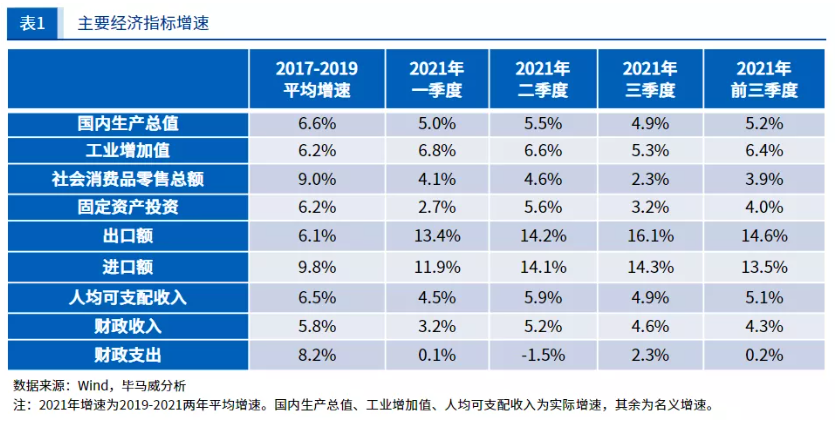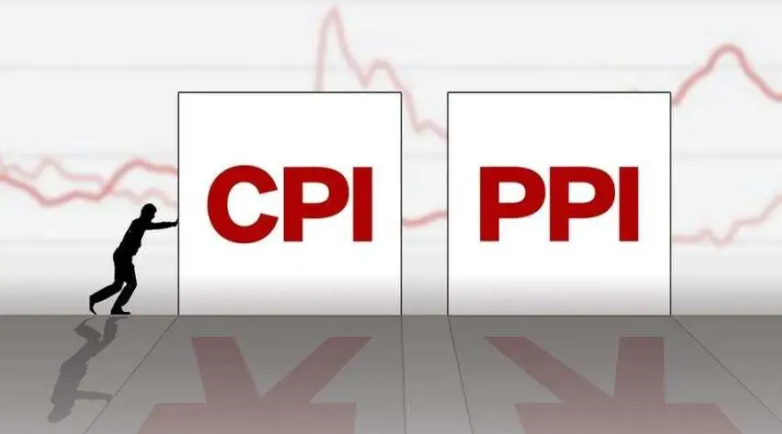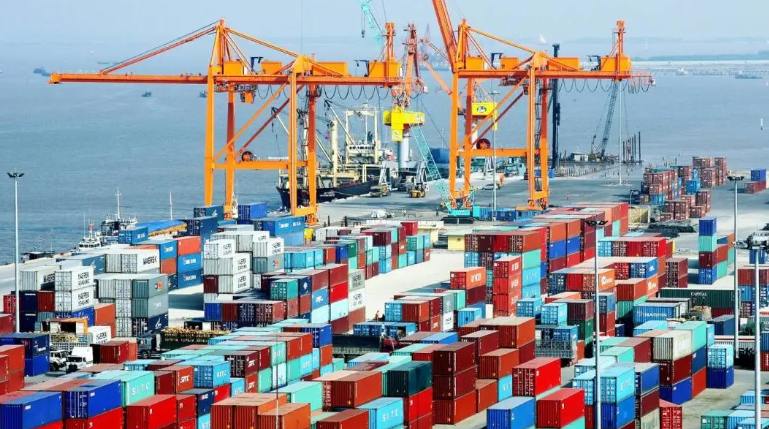
Introduction
KPMG China released the top ten macroeconomic trends outlook for 2022, which said that with the epidemic gradually controlled and macro policies more flexible and accurate, China's economy will maintain recovery in 2022, and the recovery momentum will gradually shift from external demand to more domestic demand, with an expected GDP growth of 5.2%.
Report details
Novel coronavirus pneumonia is gradually being restored in 2021. China has effectively controlled the spread of the epidemic, and its economy has also taken the lead in achieving recovery in the world. It has not only become the only major economy in the world to achieve positive growth in 2020, but also maintained a sustained recovery trend in 2021.
Looking back on China's economy in 2021, foreign trade remained strong, but domestic demand was weak. In terms of macro policy, with the continuous improvement of China's economy after the epidemic, China's macro policy has also returned to normalization, which has been significantly tightened compared with that during the epidemic. At the same time, the government has increased the supervision of education and training, Internet platform, real estate, high energy consumption and other fields. The pace of China's economic recovery slowed down in the second half of the year.

Looking forward to 2022, as the epidemic situation is gradually controlled and macro policies become more flexible and accurate, KPMG expects China's economy to continue to recover, and the recovery momentum will gradually shift from external demand to more domestic demand.
China's economy is expected to grow by 8.0% this year (2021) and 5.2% in 2022. It is believed that while China's economy maintains growth next year (2022), there are ten macro trends worthy of attention. Understanding these macro trends will help enterprises grasp the market development direction and better find opportunities. These ten macro trends include:

The epidemic situation and epidemic prevention policy are still the key factors determining the pace of economic recovery
The novel coronavirus pneumonia outbreak has been on the rise since the spring of 2021, with the emergence of more virulent strains of Delhi. However, the accelerated global promotion of vaccines has also reduced severe and mortality. Although the number of new cases per day at the peak of the epidemic at the end of April 2021 exceeded that at the beginning of the year, the number of deaths was lower than that in the same period, indicating the protective effect of the vaccine. China adheres to a strict epidemic prevention policy and continues to effectively control the spread of the epidemic. However, the repeated outbreaks have also affected the pace of China's economic recovery, especially the impact on retail and other industries. The epidemic remains a key factor in determining the pace of economic recovery in 2022. We expect that China will maintain a relatively strict epidemic prevention policy in the near future. Adhering to the goal of "dynamic clearing", the formulation of epidemic prevention measures by local governments should also be more scientific, standardized and accurate, strengthen cross sectoral and cross regional coordination, and achieve a reasonable balance between epidemic prevention and control and economic and social development. At the end of 2021, a new mutant strain Omicron was found in South Africa. The number of mutation sites is significantly more than that of all the new coronavirus strains previously found, which may be more infectious. The continuous variation of the virus once again shows the importance of global joint fight against the epidemic.
The gap between CPI and PPI narrowed, and China's inflation pressure was controllable as a whole
In terms of consumer goods prices, due to the low base in 2021, the continuous recovery of consumption and the transmission of some upstream price increases to the downstream, we expect CPI to pick up in 2022; In terms of producer prices, with the gradual improvement of the epidemic situation and the continuous recovery of the supply of raw materials and products, the tense situation of supply and demand will be alleviated. Superimposed on the high base effect in 2021, we expect PPI to fall steadily in 2022. On the whole, China's inflation pressure is generally controllable in 2022, but we also need to pay close attention to the trend of global inflation.
03 consumption continues to pick up and the rise of new domestic products is accelerating

In the short term, the pace of consumption recovery will still be affected by the epidemic prevention and control policies. However, the foundation of China's consumption is still stable, especially the continuous improvement of the employment market, which has laid a solid foundation for the recovery of consumption. In the medium and long term, the further improvement of China's urbanization rate, the promotion of the common prosperity policy and the popularization of social welfare such as pension and medical insurance will support China's consumption growth. In addition, the rapid rise of new domestic products has brought new growth impetus to the consumer market.
04 rapid growth of investment in scientific and technological innovation and green transformation manufacturing industry

In recent years, China's high-tech manufacturing investment has maintained a growth rate of more than 10%, which is significantly higher than the overall growth rate of manufacturing investment. Driven by the policy, we expect the manufacturing investment with scientific and technological innovation as the core will continue to grow rapidly. At the same time, investment related to green development is another focus. In recent years, China's major power generation enterprises have increased investment in renewable energy such as hydropower and wind power, accounting for nearly 80% of the total investment in power projects from 63% in 2011. Recently, the central bank launched a new carbon emission reduction support tool and set up another 200 billion yuan of special refinancing to support the clean and efficient utilization of coal. We expect that the investment in green and low-carbon fields will also grow rapidly.
05 real estate regulation and control will continue. Stabilizing the market and stabilizing expectations are the core policy objectives

From the second half of 2021, China's regulation of the real estate market has been continuously tightened, and a comprehensive regulation has been carried out from the source of funds to the supply of land, cooling the real estate market. Recently, there have been some fine-tuning of real estate policies in some regions, but it is expected that the overall real estate regulation will remain tight in 2022, and there is little possibility of large-scale relaxation. We expect that the new construction and sales of real estate may continue to weaken in 2022, but the construction and completion are expected to remain stable, and the overall real estate investment will decline steadily. At the same time, we should also see that the core goal of macro-control is not to suppress the real estate market, but to establish and improve the long-term mechanism of real estate and realize the stable and healthy development of the real estate market. It is expected that the State Council will soon release the specific measures for the pilot of real estate tax, and the governments of the pilot areas will formulate specific implementation rules accordingly.
06 export growth slowed down and the trade surplus narrowed

In 2021, China's exports maintained rapid growth. In the first October, China's exports of goods reached US $2.7 trillion, which has exceeded the total exports of the whole year in 2020 and reached a record high. The sustained recovery of the world economy will enhance the willingness of enterprises to spend capital and drive the export of China's mechanical and electrical products in 2022; In addition, the capacity repair of emerging market economies is slow, and there is a certain alternative demand for China's manufacturing exports. However, with the recovery of consumption in developed economies turning more to the service industry, reducing the demand for goods, tight shipping conditions and other factors, combined with the impact of a high base, we expect China's export growth to slow down in 2022, but the overall growth will remain at a high level. The recent strengthening of China US dialogue will help improve China US economic and trade relations. It is expected that China's import trade will continue to grow in 2022 and the overall trade surplus will be reduced.
Foreign investment remained at a high level and foreign investment grew steadily
Novel coronavirus pneumonia epidemic spread worldwide has a significant impact on cross-border investment, in 2020, the global foreign investment (FDI) fell by 35%, while in 2020, China's actual use of foreign investment increased by 6%, showing China's attraction to foreign capital. With the gradual repair of the world economy, global FDI rebounded, and China's foreign investment continued to maintain a high growth in 2021. China's sustained economic fundamentals and comprehensive competitive advantages in market scale, industrial supporting facilities, infrastructure and business environment still have strong attraction for foreign investment, especially in the fields of wealth management and new energy. It is expected that China's foreign investment will remain high in 2022. In terms of foreign investment, with the gradual control of the epidemic and the gradual recovery of the world economy, China's foreign investment also began to stabilize and grow. In 2020, China's foreign investment flow jumped to the first place in the world for the first time, accounting for more than 20% of the world. In recent years, China has been accelerating the negotiation of regional economic and trade agreements. We expect ODI to continue to stabilize and recover in 2022.
08esg's attention has been continuously improved, and carbon reduction measures have been strengthened systematically and systematically

Enterprises are increasingly aware that the development mode of only pursuing profit growth and ignoring the environmental and social impact of enterprises is unsustainable, and their attention to ESG is also increasing. Improving ESG management can help enterprises reduce compliance risks, enhance employee identity and enhance enterprise brand image, so as to bring long-term value to enterprises. At the same time, green and low-carbon is the general direction of China's long-term economic development. The realization of the "double carbon" goal cannot be achieved overnight. It needs to be promoted scientifically and orderly to achieve the "double carbon" goal. Recently, the opinions on completely, accurately and comprehensively implementing the new development concept and doing a good job in carbon neutralization of carbon peak and the action plan for carbon peak before 2030 have been issued successively, gradually forming a "1 + n" policy system. We believe that the carbon reduction work in 2022 will be further promoted and further strengthened systematically and systematically.
09 supply chain layout pays more attention to resilience and risk resistance


With the rapid development of economic globalization, multinational corporations' supply chains continue to strengthen lean management in order to reduce costs, increase efficiency and improve timeliness (just in time, JIT). However, the more stringent epidemic prevention and control measures have interfered with population flow and transportation logistics, increasing the pressure on the global industrial chain. In the post epidemic era, while focusing on low cost and low inventory, enterprises will pay more attention to the safety and stability of the supply chain, the toughness and anti risk ability of the whole chain, and emphasize just in case (JIC) before unknown risks occur. At the same time, the green and digital supply chain has also become the focus of enterprises.
The global economic recovery is uneven and different economies are divided
Different from the sub crisis in 2007-2009, the impact of the global public health crisis on developed economies is less than that of developing countries. According to the prediction of imf1 in January, the GDP of developed economies in 2021 will decline by 2.8% compared with the prediction before the outbreak, which is significantly less than the economic loss of developing countries by 4.9%. Higher vaccination coverage and sufficient financial space are the key to the rapid economic recovery of developed economies after the epidemic. As the epidemic is gradually brought under control, we expect the world economy to recover further, but the imbalance may continue, and the sustainability of the recovery is also worthy of attention.
-THE END-
Source: KPMG China
This article is only for information sharing. If there is infringement, please contact us





